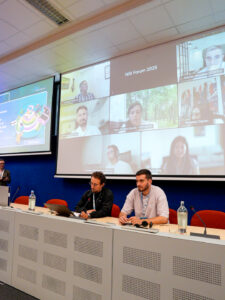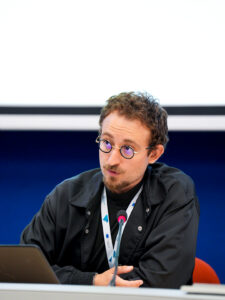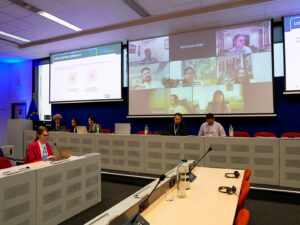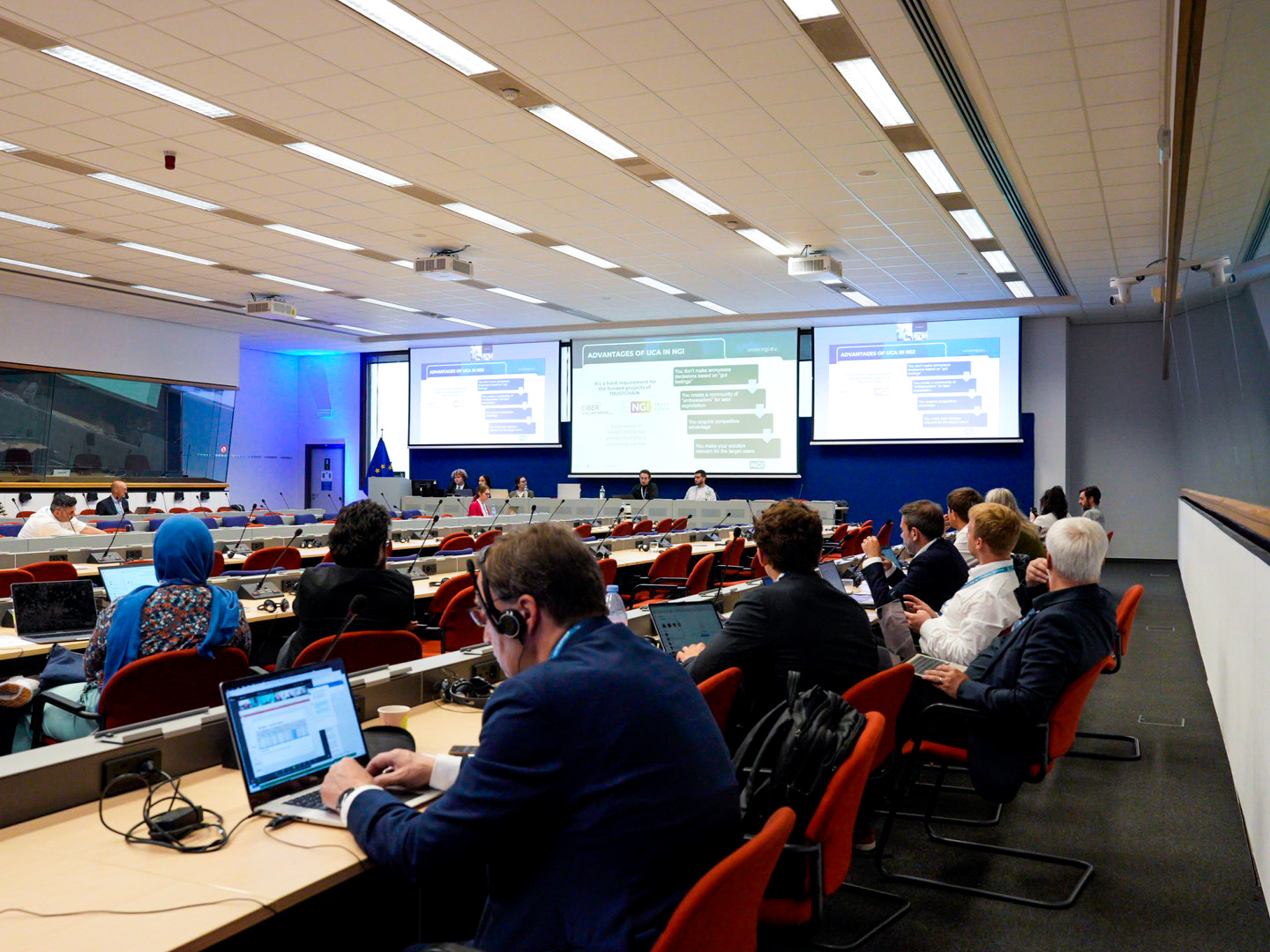“Co-creating the building blocks of the NGI with the end-user at the centre” held during the NGI Forum 2025 moderated by Andres Del Alamo from Fundación Cibervoluntarios, explored how we can ensure that the next generation of the internet is truly built around the needs and empowerment of its users. Our esteemed speakers, including Pr. Muttukrishnan Rajarajan (City St George’s University of London), Ruben Roex (Timelex), and Thanasis Papaioannou (National and Kapodistrian University of Athens), shared insights on fostering user-centric development and designing a digital future that prioritizes trust, privacy, and control.
 The Session: Uniting for European Digital Sovereignty with a User Focus
The Session: Uniting for European Digital Sovereignty with a User Focus
The main objective of this specific session was to bring the NGI community together to discuss strategic aspects of legal sovereignty for Europe, with a strong emphasis on user-centricity. As Andres Del Alamo noted, “This particular forum felt a bit more political than other NGI forums, in that people were discussing strategic aspects of legal sovereignty for Europe.” The atmosphere was charged with enthusiasm for a new paradigm for the Next Generation Internet. There was a palpable commitment from both the European Commission and the European Parliament to transform NGI solutions into a tangible reality, envisioning them as the digital infrastructure of the European Union and a viable alternative to the dominance of big tech, all while keeping the end-user at the core. The impact of such a unified vision cannot be overstated, as it lays the groundwork for a truly independent and user-focused digital future for the continent.
An Ambassador for User-Centricity: Sharing TrustChain’s Vision
Andres’ role at this parallel session was clear: to serve as an ambassador for the user-centric approach within the NGI community. There’s a prevailing perception that NGI solutions struggle to compete with more widely adopted alternatives in terms of usability and user-centeredness. His mission was two-fold: first, to share the invaluable expertise and knowledge gleaned from the TrustChain project, highlighting its significance and value; and second, to earnestly encourage everyone present to commit wholeheartedly to a user-centric approach in developing their solutions.
 Andres also made a concerted effort to address opinions that suggested NGI adoption was solely a matter of personal responsibility or that users were exclusively interested in NGI solutions for privacy reasons. Drawing on lessons learned from TrustChain, he aimed to demonstrate that this is not always the case. It was crucial to showcase TrustChain projects that have successfully implemented user-centric methods, proving that it is indeed possible to create highly usable solutions within the NGI paradigm. This was not just about promoting TrustChain, but about inspiring others and demonstrating the practical feasibility of user-centric design in this space. As Andres reflected, “Honestly, I also wanted to showcase the TrustChain projects because I’m personally proud of the work we’ve done together. The positive reception was encouraging and motivates us to continue our efforts.”
Andres also made a concerted effort to address opinions that suggested NGI adoption was solely a matter of personal responsibility or that users were exclusively interested in NGI solutions for privacy reasons. Drawing on lessons learned from TrustChain, he aimed to demonstrate that this is not always the case. It was crucial to showcase TrustChain projects that have successfully implemented user-centric methods, proving that it is indeed possible to create highly usable solutions within the NGI paradigm. This was not just about promoting TrustChain, but about inspiring others and demonstrating the practical feasibility of user-centric design in this space. As Andres reflected, “Honestly, I also wanted to showcase the TrustChain projects because I’m personally proud of the work we’ve done together. The positive reception was encouraging and motivates us to continue our efforts.”
Highlights and Lessons Learned for the Path Forward
The discussions underscored several key highlights and lessons from this TrustChain-focused session. The commitment from European institutions to prioritize user needs and empower individuals through digital solutions was a strong takeaway. The session emphasized that trust, privacy, and control are not just buzzwords but foundational pillars for the internet’s next iteration. A critical lesson learned is the need to actively counter misconceptions about user adoption and demonstrate the tangible benefits of user-centric design beyond just privacy. The positive reception to TrustChain’s examples proved that there is a real appetite for solutions that combine robust NGI principles with excellent usability.

TrustChain’s Path Forward and the Role of OC Teams
Looking ahead, TrustChain is poised to build on this momentum. The project will continue to champion user-centric development and collaborate closely with the NGI community. This includes providing publicity for the OC5 teams, whose innovative work will further demonstrate the practical application of user-centric principles. It was also incredibly important that teams from previous Open Calls participated in the forum. Their presence provided invaluable real-world examples and demonstrated the continuous evolution and success of user-centric NGI solutions. Their experiences served as powerful testimonials, inspiring new teams and reinforcing the message that a user-centric digital future is not just an aspiration but an achievable reality. Their participation underscored the long-term commitment and progress within the TrustChain ecosystem, proving that sustained effort leads to impactful, user-empowering innovations.
This parallel session at the NGI Forum 2025 reinforced the collective commitment to building an internet that truly serves its users, prioritizing their needs, trust, and control. The path forward for TrustChain and the broader NGI community is clear: continued collaboration, innovation, and unwavering dedication to user-centric principles.

